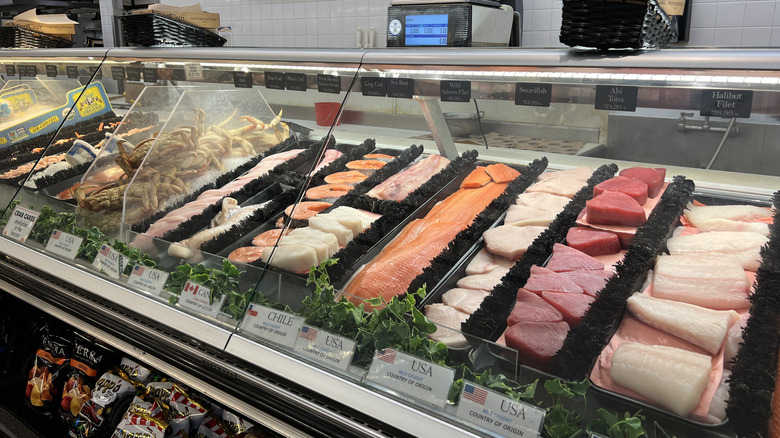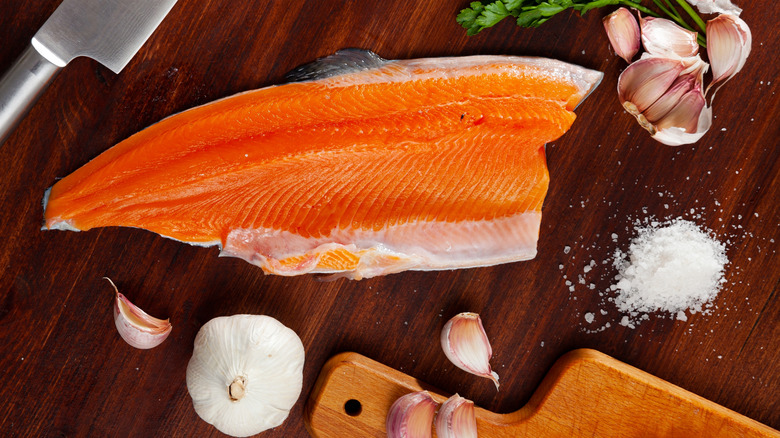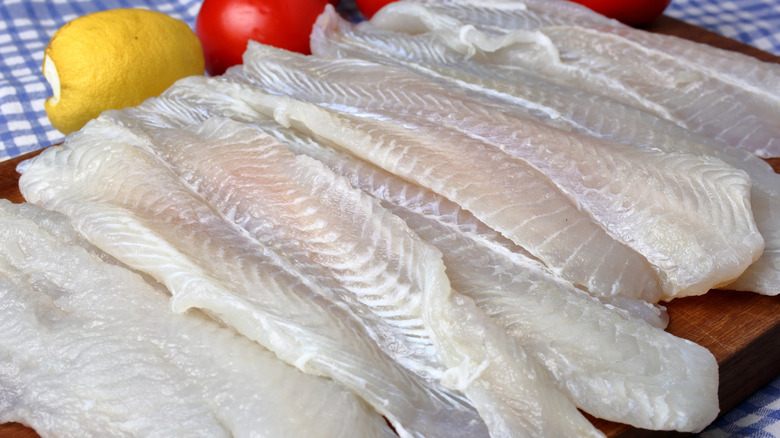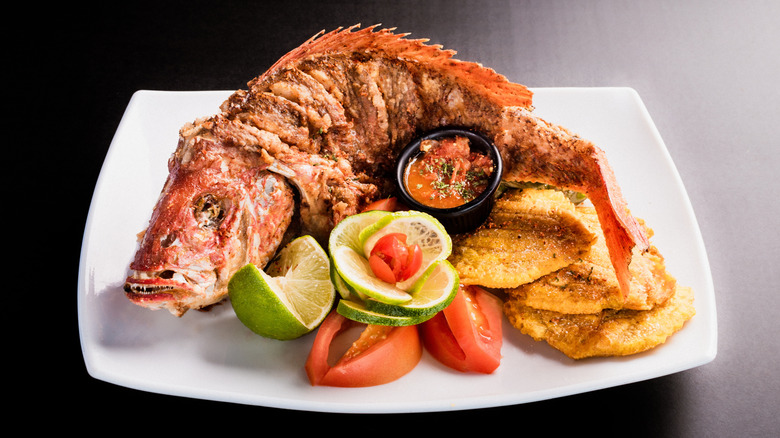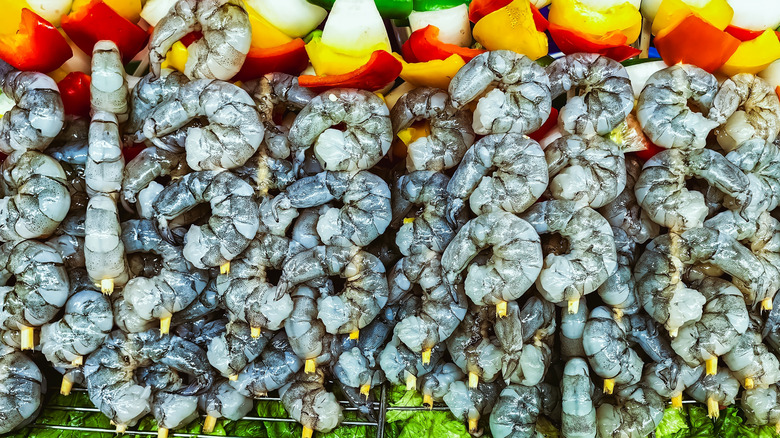The 4 Affordable Alternatives You Can Try For Fresh Salmon
We get it. It can start to feel monotonous eating salmon dish after salmon dish, trying to hit the recommended seafood goals to get in your omega-3 fatty acids and other benefits as part of a well-rounded diet. It can also be expensive and confusing trying to navigate the differences between healthier wild-caught salmon over farmed Atlantic salmon. But, have no fear! We've compiled a short list of delicious options that are still packed with all the healthy goodness of salmon but come at a more affordable price point. These are variations your stomach and your wallet will love.
You'll have the freedom with any of these options to use them in place of salmon in your favorite tried and true dishes or feature them in other fantastic seafood preparations. Wild-caught salmon, the better option in the two when comparing wild versus farmed, can range from $17 to $32 a pound and sometimes more — not fun or feasible when you're on a budget. Let's get into the more affordable swaps.
Steelhead trout
For a salmon adjacent option, go for steelhead trout. Filets of steelhead will look remarkably close to salmon and have a similar texture and mouthfeel. In fact, a steelhead trout is so closely related to salmon that it's considered a pseudo-sister genus. Both species are reddish pink in hue with the same ripples of heart healthy omega-3s. But steelhead trout actually contains a higher amount of this fatty acid than salmon, it has more vitamin D, and it often tastes less fishy than salmon.
Steelhead trout is a perfect swap for salmon when you're wanting some easy, crispy salmon bites made in your air fryer without the hefty price tag. On average, steelhead will cost less at the grocery store, though prices vary depending on your location. At one local grocery store near us, a pound of wild-caught Alaskan sockeye salmon filet was listed at $17.65 compared with a steelhead trout filet for $11.41 per pound. For a different take, try this easy bacon wrapped trout with pesto recipe.
Grouper
There are over a dozen varieties of grouper, but two are common in grocery stores and make great affordable seafood options. The two you're most likely to see in stores are red grouper and goliath grouper. In general, this is a white fish commonly found in the Gulf of Mexico and along the Atlantic coast. The texture and flavor of this species of fish is akin to crossing cod with halibut, still beautifully flaky and mild in flavor though with a little more substance to it than your basic Pacific cod.
With these two facets, grouper makes for amazing golden beer-battered fish and chips. The slight sweetness and firm texture allow for tender bites without the whole piece unceremoniously crumbling apart. You'll never reach for cod again after switching to grouper. Red and goliath grouper are both low in saturated fat and packed with vitamins and minerals like selenium, an unsung hero in metabolism and immune function, and phosphorus. Of these fish options, grouper will be closer in price to wild salmon, though it still should be cheaper.
Red Snapper
Better than bluefish, which is one of the fish types not to be eaten regularly due to its unsustainability and high mercury content, according to some chefs, red snapper is a delicious option when preparing a whole fish. Texturally more exciting than simply baking the fish, red snapper can be fried whole for an out-of-this-world plated presentation. After cleaning the fish (no guts, no gore, no scales), score each side of the body by making cross-hatched diamond shapes. You'll want to penetrate through the skin just enough that your knife cuts into the meat but not so much that you're carving chunks off before it goes in to fry. You can either pan fry or deep fry, depending on your kitchen equipment.
The whole fish will fry to perfection in less than 10 minutes. The genius with this preparation, other than frying (yum!), is in the diamond design. You can plate the fish standing up like it's still swimming, and the meat will easily fall right off, no knife required. What's even better is that buying a whole red snapper is often times cheaper than purchasing a pound of wild caught salmon.
Shrimp
For those of you who want a shellfish option to mix up the status quo of fin fishes, there's always shrimp. The size of the shrimp you're choosing, though, will come into play when looking for affordable options. Shrimp and finfish are both priced per pound, but since shrimp weigh less than a pound, they are measured in units per pound. Can you imagine a single shrimp weighing a pound? That'd birth a new version of "Freddy versus Jason" but rather as "Jaws versus Shrimp."
The more technical sizing of shrimp will use the letter "u" followed by a number range along with a basic descriptor for the ease of consumers. For example, you'll see "U-6/8, jumbo" or "U-13/15" listed on packages. The first half of that label means that six to eight shrimp of that size or 13 to 15 shrimp will equal a pound. That being said, the lower the number, the more expensive the cost will be. Smaller shrimp like 13/15s or 16/20s will be the more affordable options and perfect for making a savory salt and pepper shrimp stir fry or for by-the-pound peel-and-eat shrimp nights.

